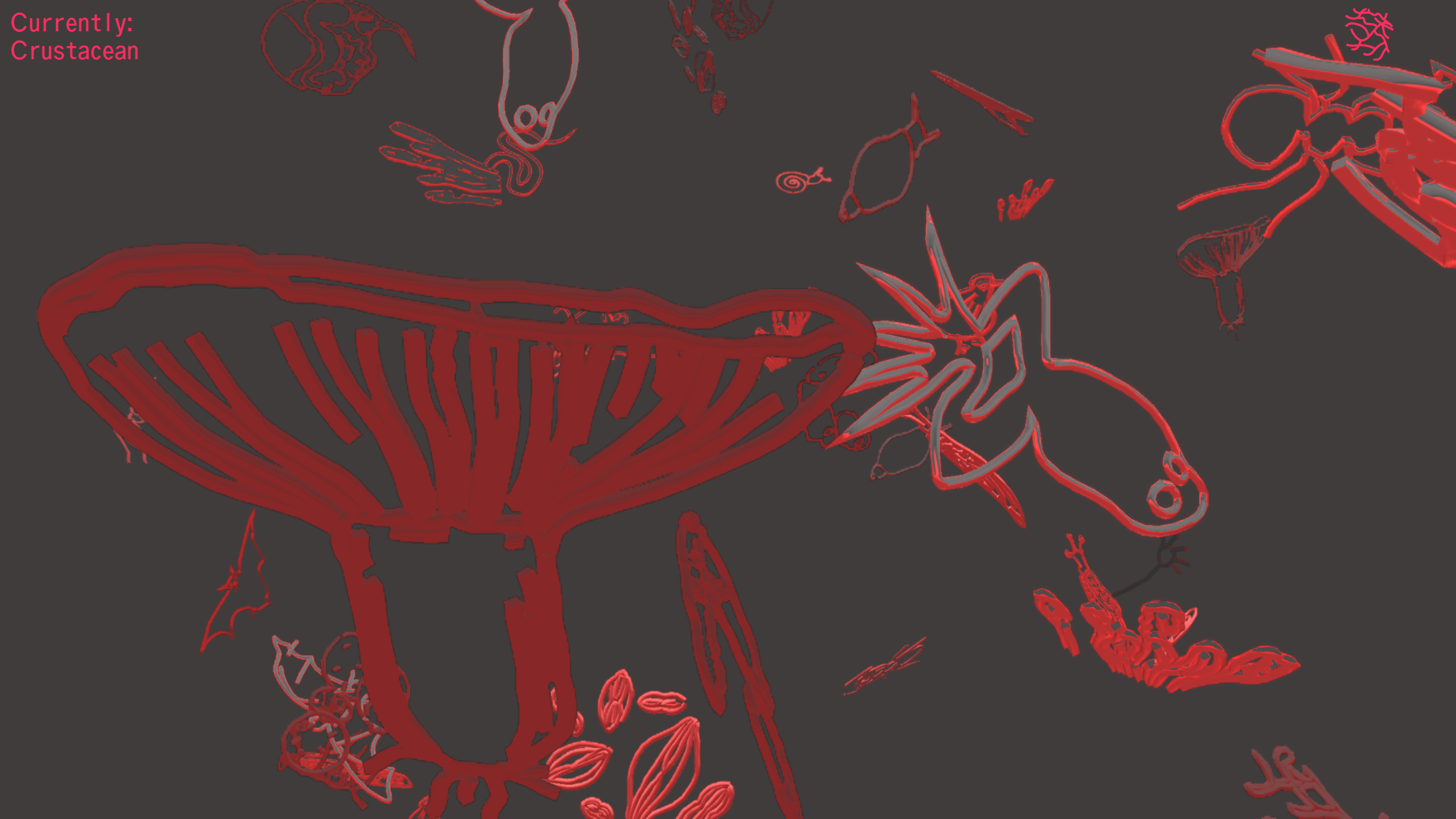The exploratory Swamp Game: Eat Me, installed in the center of the Postscript of Silence exhibition at McaM in Shanghai, invites the public to experience the changes in perspective unfolding in a trembling swamp. The exhibition s curated by Iris Long and Sam Shiyi Qian.
Originally commissioned by ZKM for Critical Zones – Observatories for Earthly Politics, curated by Peter Weibel and Bruno Latour with Martin Guinard, the Swamp Game was exhibited as an online exploratory experience and later as video projection and LED screen installation.
Swamp Game: Eat Me allows audience to embody different species by floating into swampian creatures: plants, insects, birds, amphibians, fungi, bacteria, or algae and discover the main rule of cannibal metaphysics: to become the other, one has to be eaten. The swamp world is uncertain and navigation here is by gut feeling. Players should abandon the human desire for individuality, productivity, and competition to allow for other ways of knowing and sensing the world. The ambient soundtrack attunes players to a metamorphic world of chimeric shapes and saturated colors, where body, scale, and pace of movement shift as the perspective changes.
More: on the Swamp Game: Eat Me


Concept: Nomeda & Gediminas Urbonas in collaboration with Nikola Bojić, Kristupas Sabolius, and Indrė Umbrasaitė (MIT Climate Visions), Development & User Experience: ungroup.group and Siamend Darwesh, Web design: Serge Rompza (NODE Berlin Oslo), Sound: Jan St. Werner (Mouse on Mars), Installation support: Vinzenz Aubry, Haozheng Feng, research in collaboration with scientists Vesta Aleknavičiūtė (Vytautas Magnus University, Kaunas), Jūratė Sendžikaitė (Nature Research Centre, Institute of Botany, Lithuania).
Swamp Game was commissioned by ZKM for Critical Zones – Observatories for Earthly Politics. Supported by Lithuanian Council for Culture.

The Swamp Game: Eat Me is inspired by the research of German botanist Carl Albert Weber, who in 1902 published the first ever treatise on swamps based on his scientific study of the Aukštumala raised bog, then colonized by German Empire, which had belonged to the former province of East Prussia. Based on his drawings and the data collected by a group of contemporary biologists who recently studied the Aukštumala bog (nowadays in Lithuania), the game proposes the swamp as a sentient entity, and what biologists term the “sympoietic relation”s that unfold in it—that is, the collective creation or organization of the fragile interdependencies of an ecosystem.
The game operates on several levels: It traces interactions between organisms and their habitats and distorts human coordinates in space and time, introducing an alternative universe where both forms and dimensions, as well as distances, intervals, and rhythms question perception and orientation. Here every member of the community is part of every other member’s environment—and as such, necessary for the survival of the environment as a whole.







